At the HistoCrypt 2018 I presented a poster about an analysis of the Dorabella Cryptogram. Here are the details of this work.
In case you haven’t already heard of it: the HistoCrypt 2018 in Uppsala was a great event. 55 attendants …
… had a lot of fun with over 25 oral presentions, two workshops, ten poster presentations, and several social events. I had the honor of being a member of the HistoCrypt steering committee.
Apart from a workshop presentation …
… I gave a poster presentation about an analysis of the famous Dorabella Cryptogram.
I certainly would have preferred to give an oral presentation about my analysis, but you can’t have erverything. It was the first time in my life that I presented work of mine in a poster session.
I decided to assemble my poster from a number of small pieces of paper (including self-drawn cartoons), like the following:
Here’s my first poster version (lying on my living room floor):
This first try evolved to a more advanced version:
Here’s my (almost) final poster creation:
The following picture was taken at the poster session on the second day of the HistoCrypt conference:
The poster content
The Dorabella Cryptogram is an encrypted text created by British composer Edward Elgar (1857-1934). It appears to be enciphered with a mono-alphabetic substitution cipher (MASC). Cryptograms of this kind can usually be solved with well-known techniques, like frequency analysis or hill climbing. However, the Dorabella cryptogram is an exception and it’s not the only one. It therefore makes sense to look around for additional MASC solving techniques—like the ones described in the book Cryptanalysis by Helen Fouché Gaines.
These techniques—vowel detection, digram analysis, and consonant lining—have been almost forgotten since the
advent of computer technology. In my poster presentation, two of these methods (the third one is not suitable) were applied on the Dorabella Cryptogram, and on an unencrypted comparison text. Although I did not find the solution of the Dorabella Cryptogram,
I was able to introduce a number of interesting insights. Especially, I showed that one of the cryptanalysis methods works surpsingly well on the comparison text and that there are still ways to improve this technique. In addition, some interesting properties of the Dorabella Cryptogram were presented, which might be helpful for further cryptanalysis.
If you want to know more about my work, look at the poster (it can be enlarged):
A more detailed description of my work is available as a research paper in the HistoCrypt conference proceedings.
I had a lot of fun analyzing the Dorabella Cryptogram with these little known cryptanalysis methods. I can only recommend to study these methods and to apply them, for instance, on the Cigaret Case Cryptogram or the Seal Cryptogram. Perhaps, one of these mysteries will someday be solved this way.
Follow @KlausSchmeh
Further reading: History’s greatest codebreaker versus history’s greatest imposter
Linkedin: https://www.linkedin.com/groups/13501820
Facebook: https://www.facebook.com/groups/763282653806483/

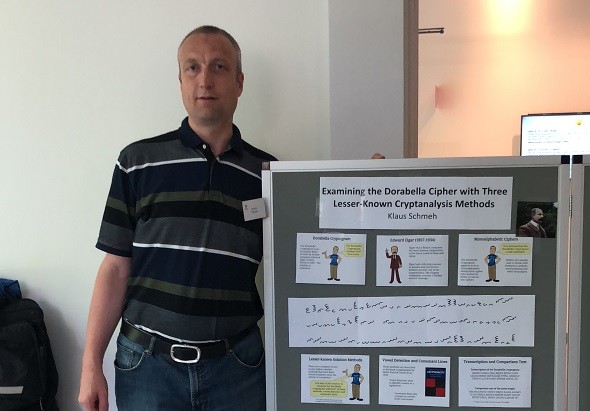
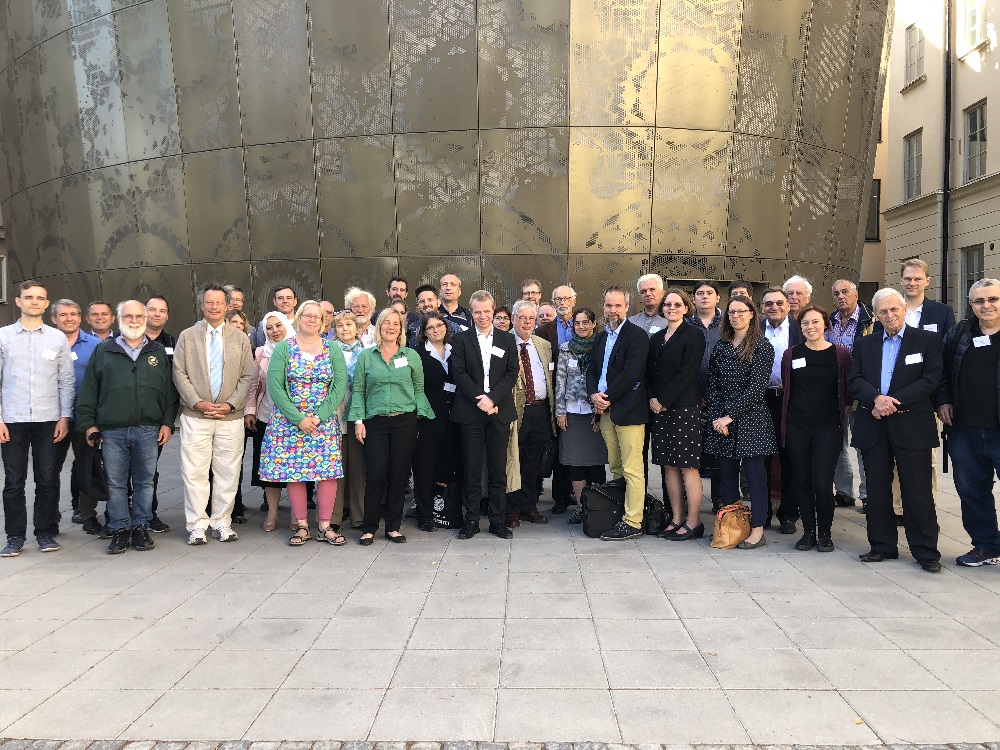
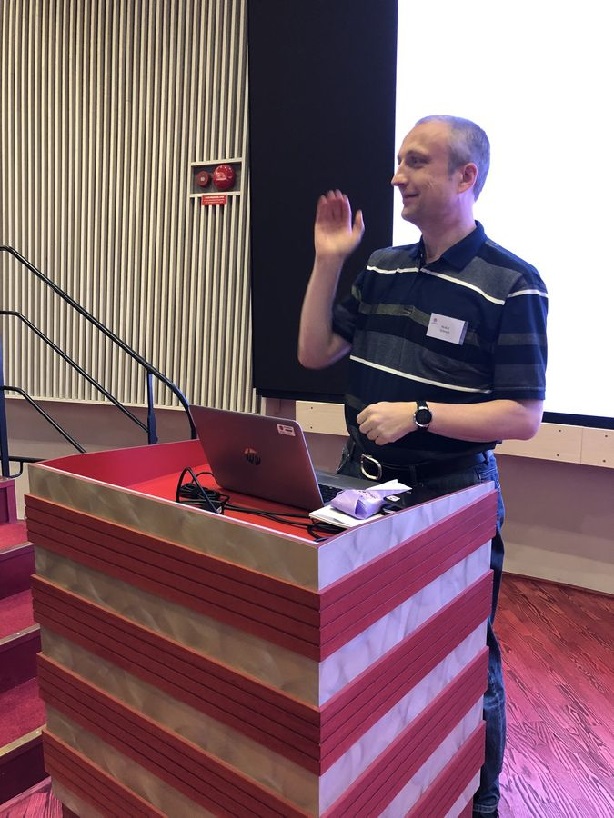
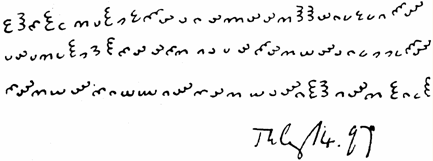
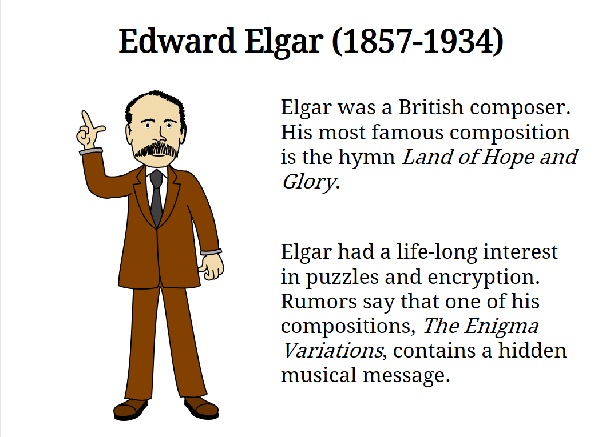
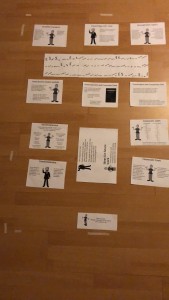
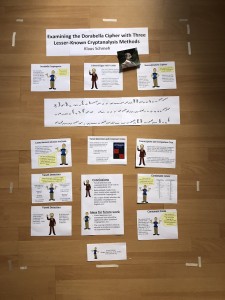
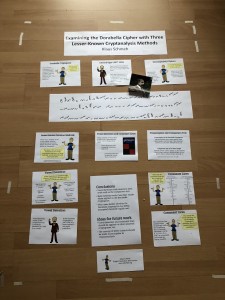
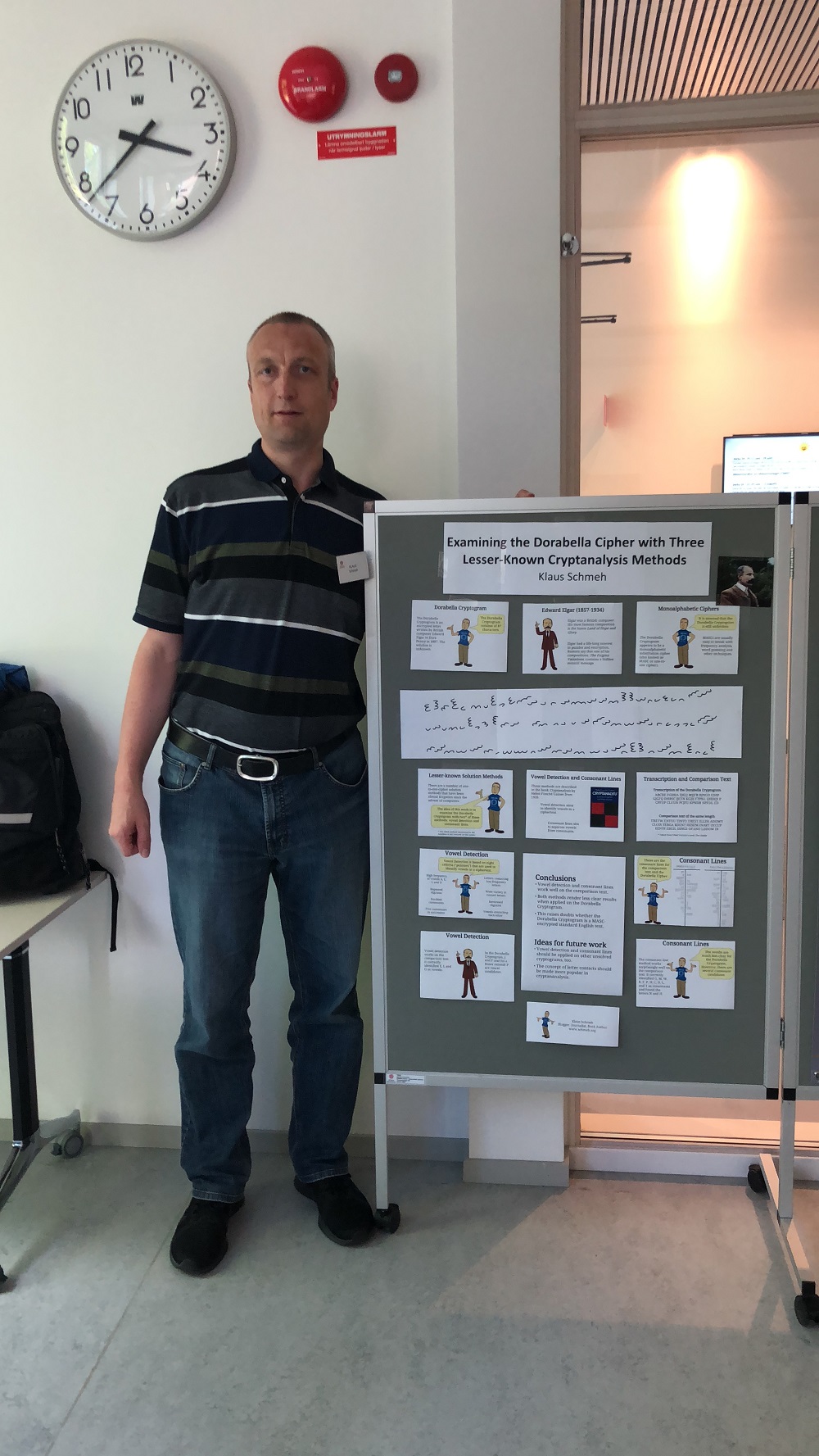
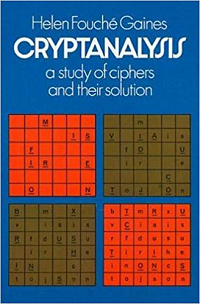
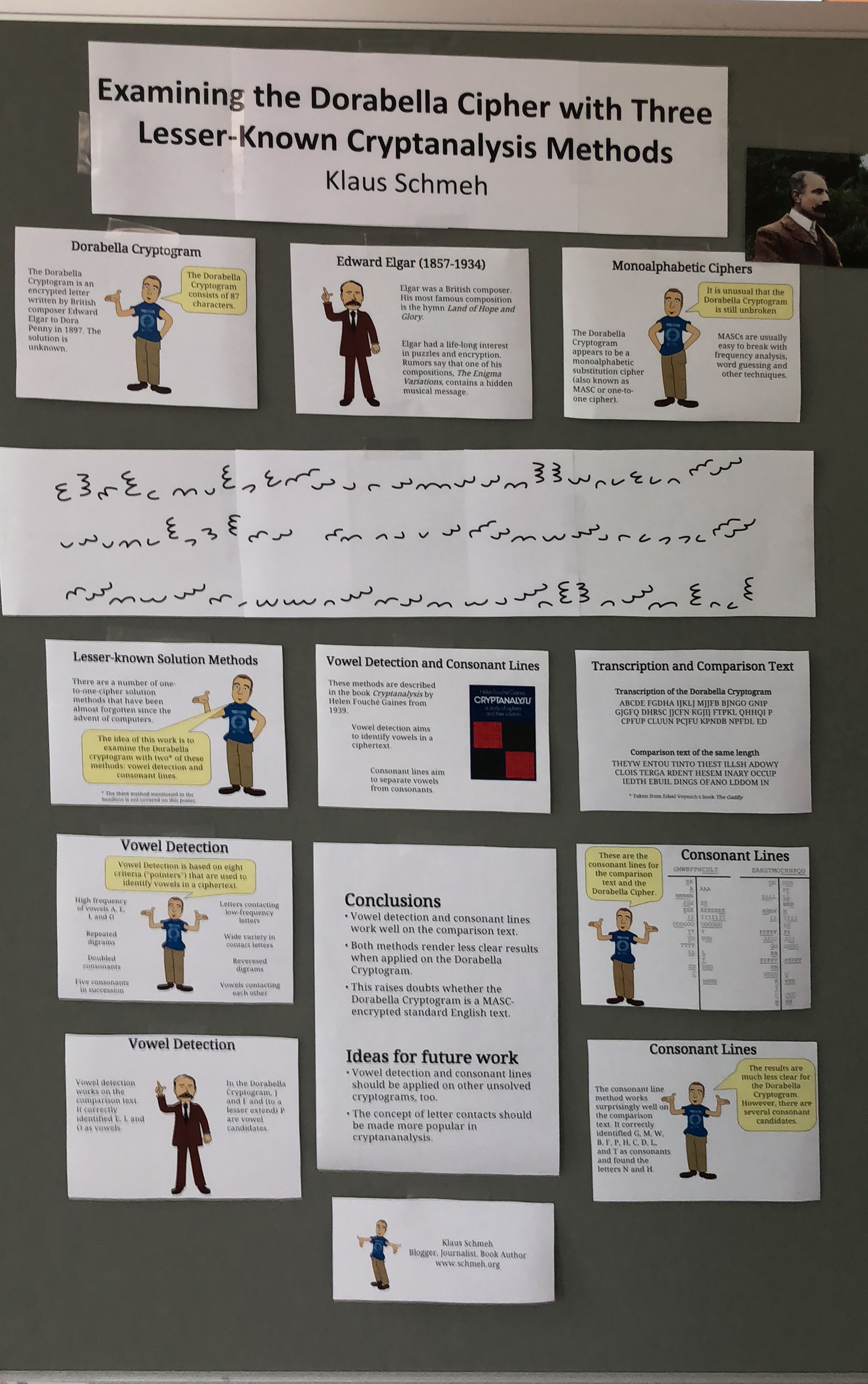

Kommentare (2)